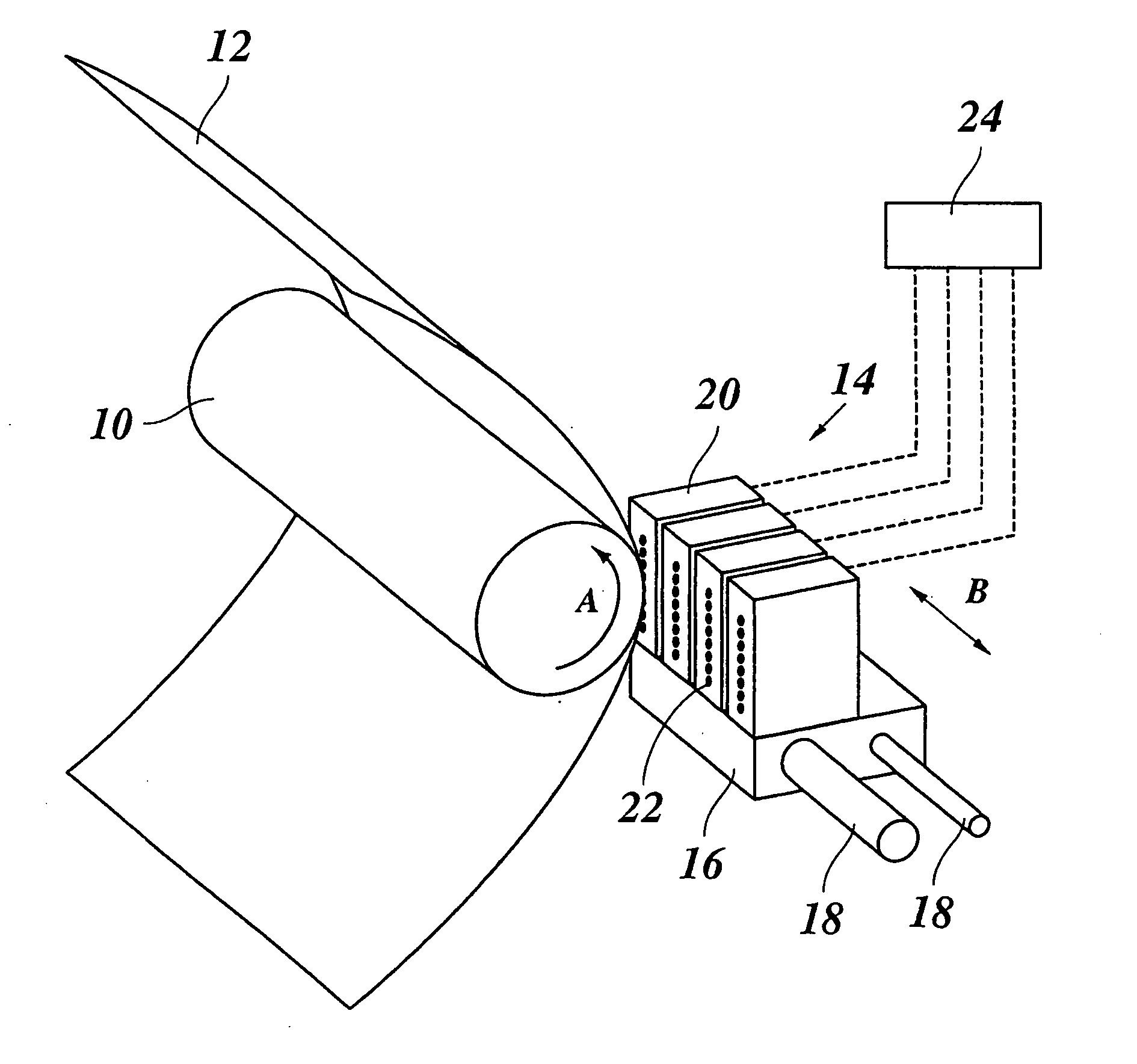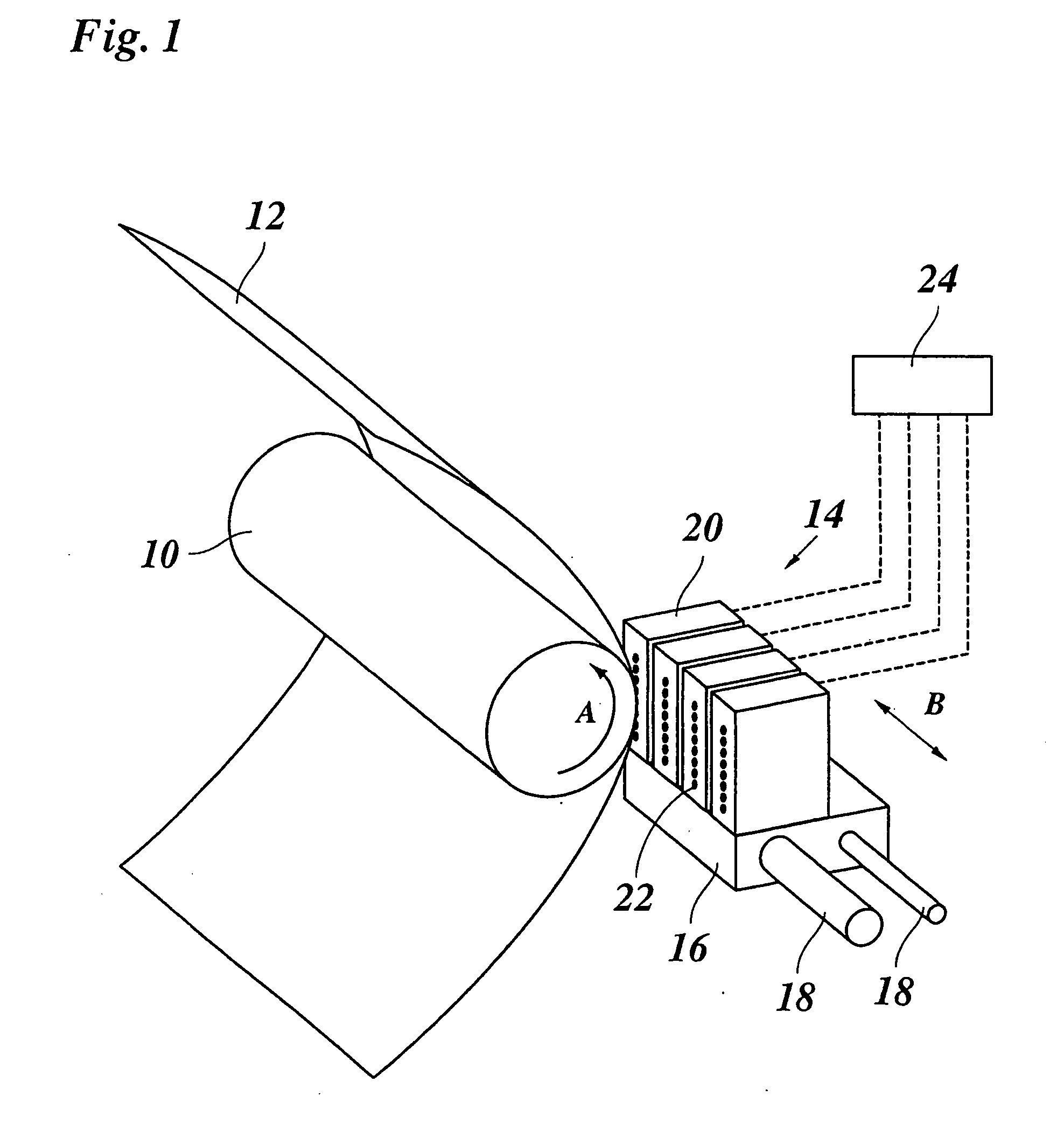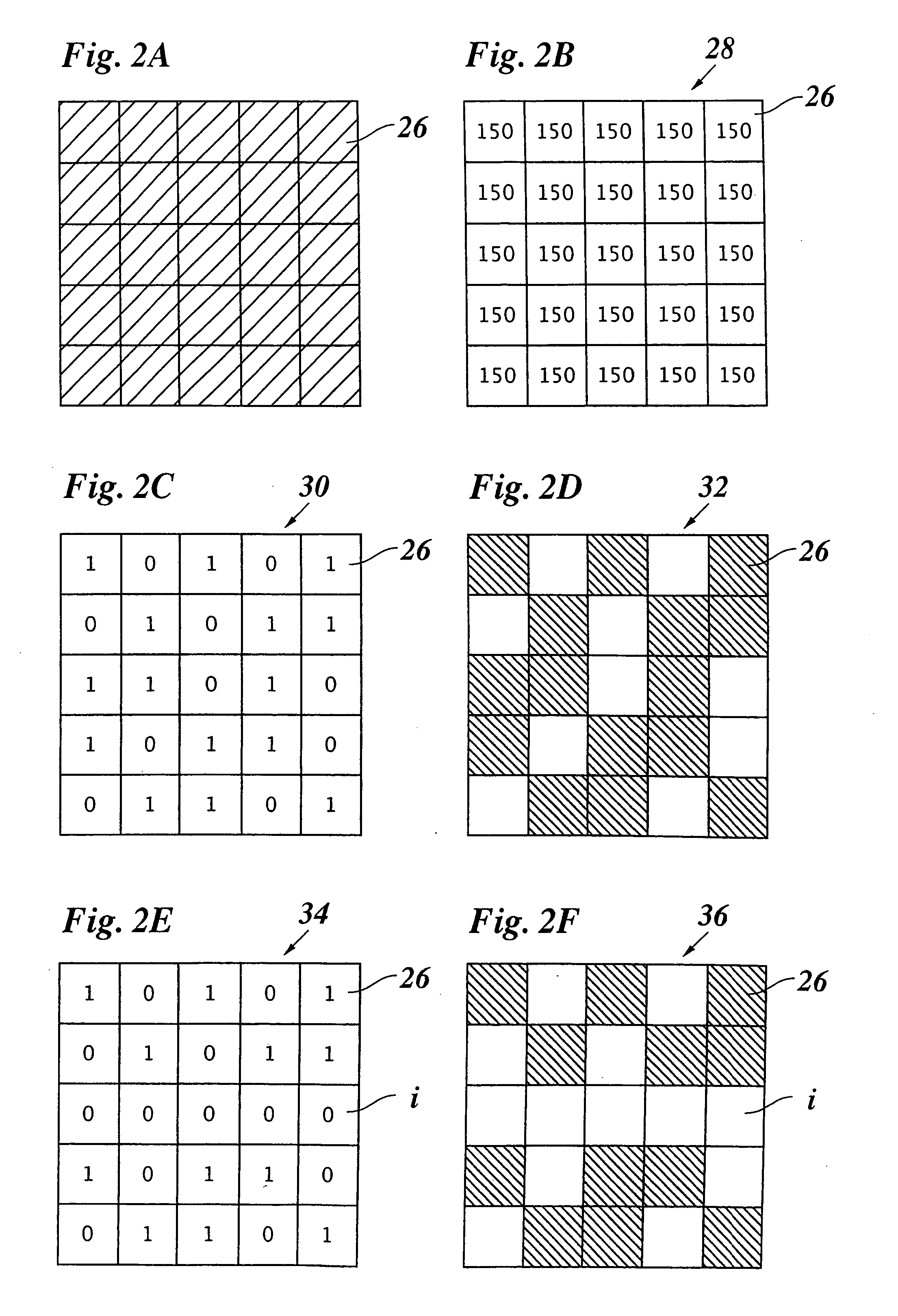Method of camouflaging defective print elements in a printer
a technology of defective print elements and printers, applied in the field of camouflage of defective print elements in printers, can solve the problems of image information loss, defective nozzles, degraded print quality, etc., and achieve the effect of camouflage of image defects
- Summary
- Abstract
- Description
- Claims
- Application Information
AI Technical Summary
Benefits of technology
Problems solved by technology
Method used
Image
Examples
Embodiment Construction
[0030] As is shown in FIG. 1, an ink jet printer comprises a platen 10 which serves for transporting a recording paper 12 in a subscanning direction (arrow A) past a printhead unit 14. The printhead unit 14 is mounted on a carriage 16 that is guided on guide rails 18 and is movable back and forth in a main scanning direction (arrow B) relative to the recording paper 12. In the example shown, the printhead unit 14 comprises four printheads 20, one for each of the basic colours, e.g., cyan, magenta, yellow and black. Each of the printheads 20 has a linear array of nozzles 22 extending in the subscanning direction. The nozzles 22 of the printheads 20 can be energized individually to eject ink droplets onto the recording paper 12, thereby to print a pixel on the paper 12. When the carriage 16 is moved in the direction B across the width of the paper 12, a swath of an image can be printed. The number of pixel lines of the swath corresponds to the number of nozzles 22 of each printhead. W...
PUM
 Login to View More
Login to View More Abstract
Description
Claims
Application Information
 Login to View More
Login to View More - R&D
- Intellectual Property
- Life Sciences
- Materials
- Tech Scout
- Unparalleled Data Quality
- Higher Quality Content
- 60% Fewer Hallucinations
Browse by: Latest US Patents, China's latest patents, Technical Efficacy Thesaurus, Application Domain, Technology Topic, Popular Technical Reports.
© 2025 PatSnap. All rights reserved.Legal|Privacy policy|Modern Slavery Act Transparency Statement|Sitemap|About US| Contact US: help@patsnap.com



